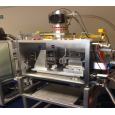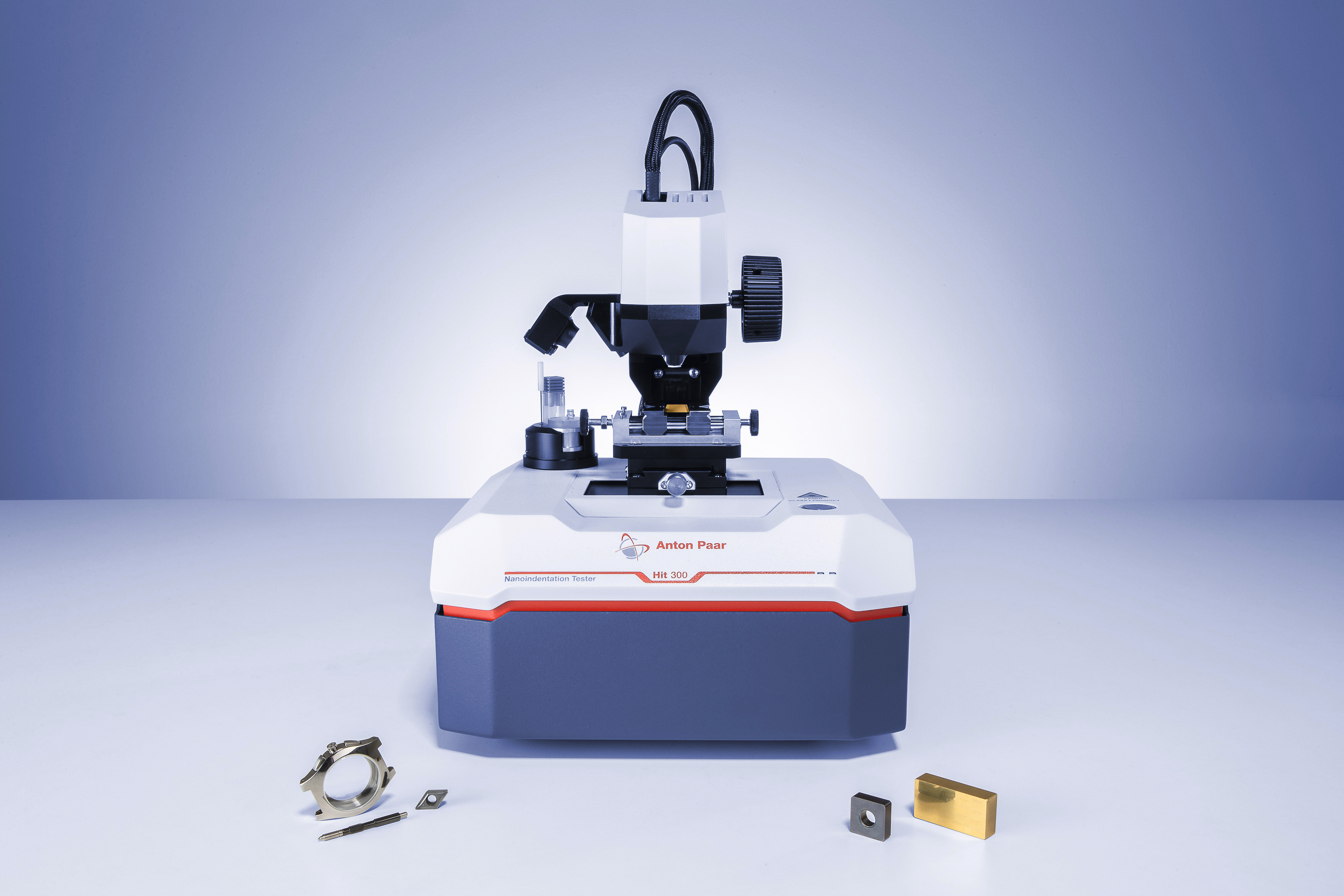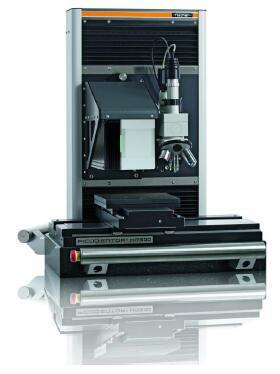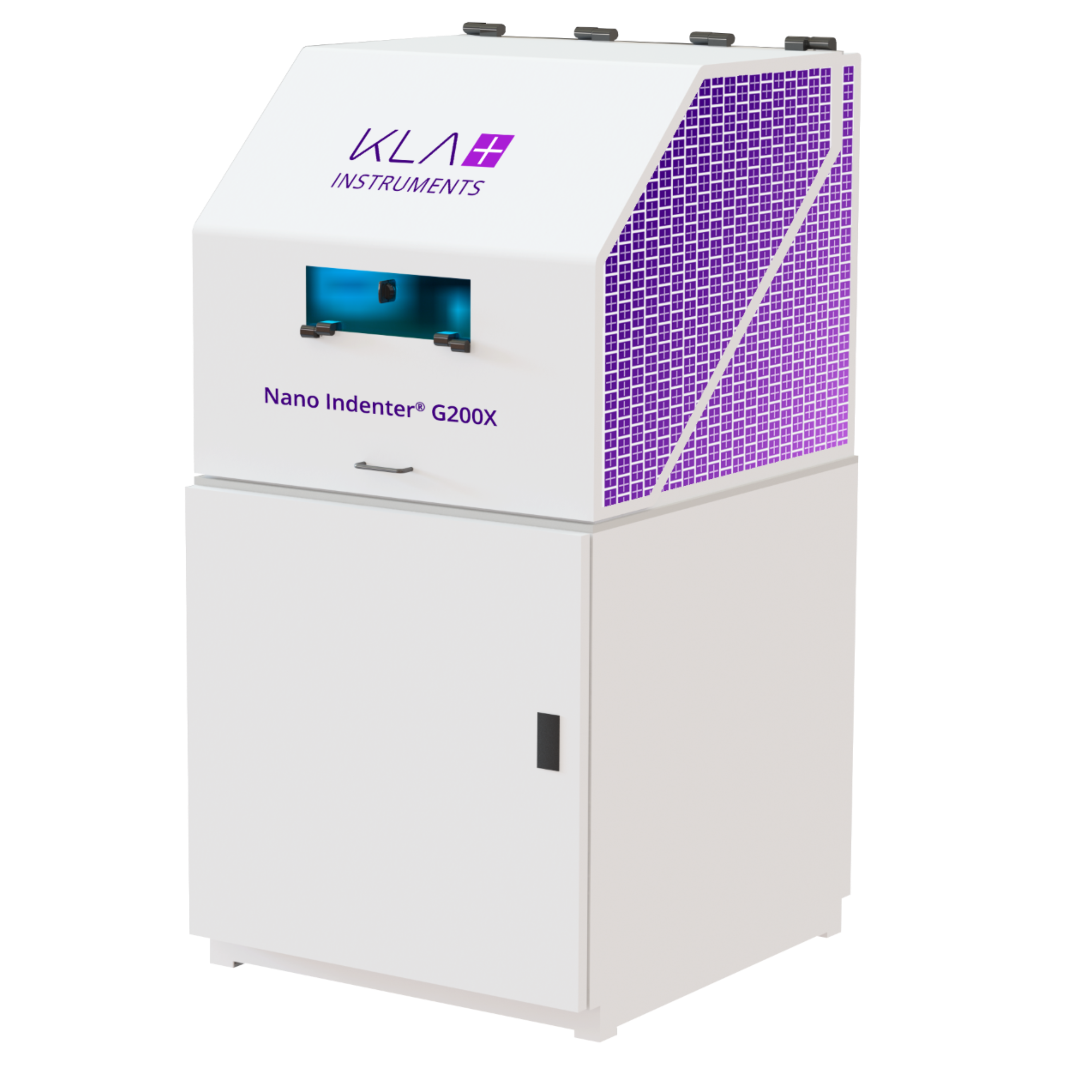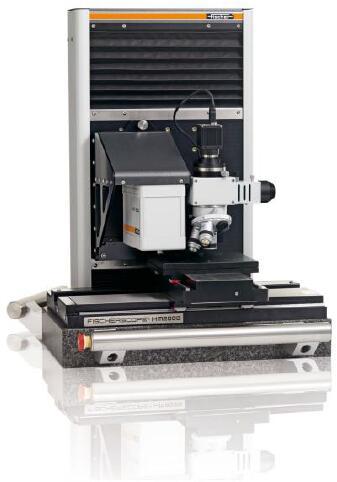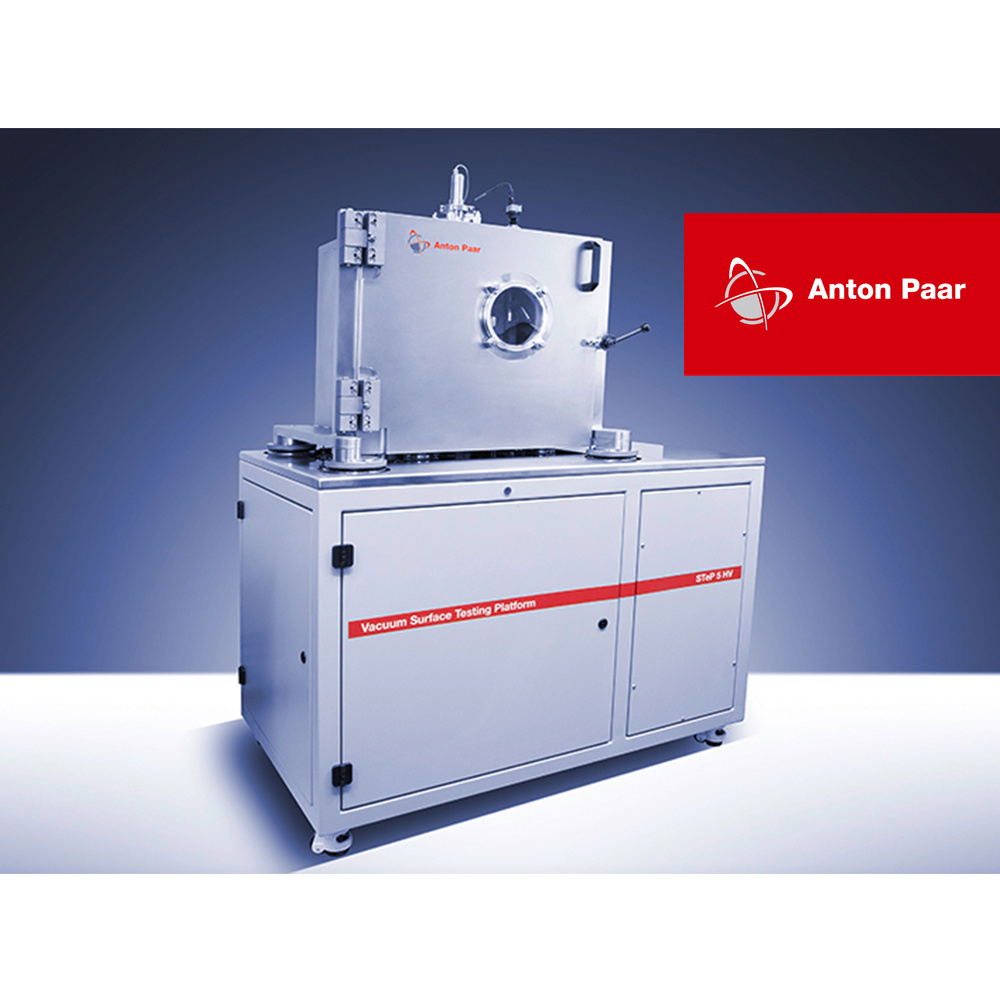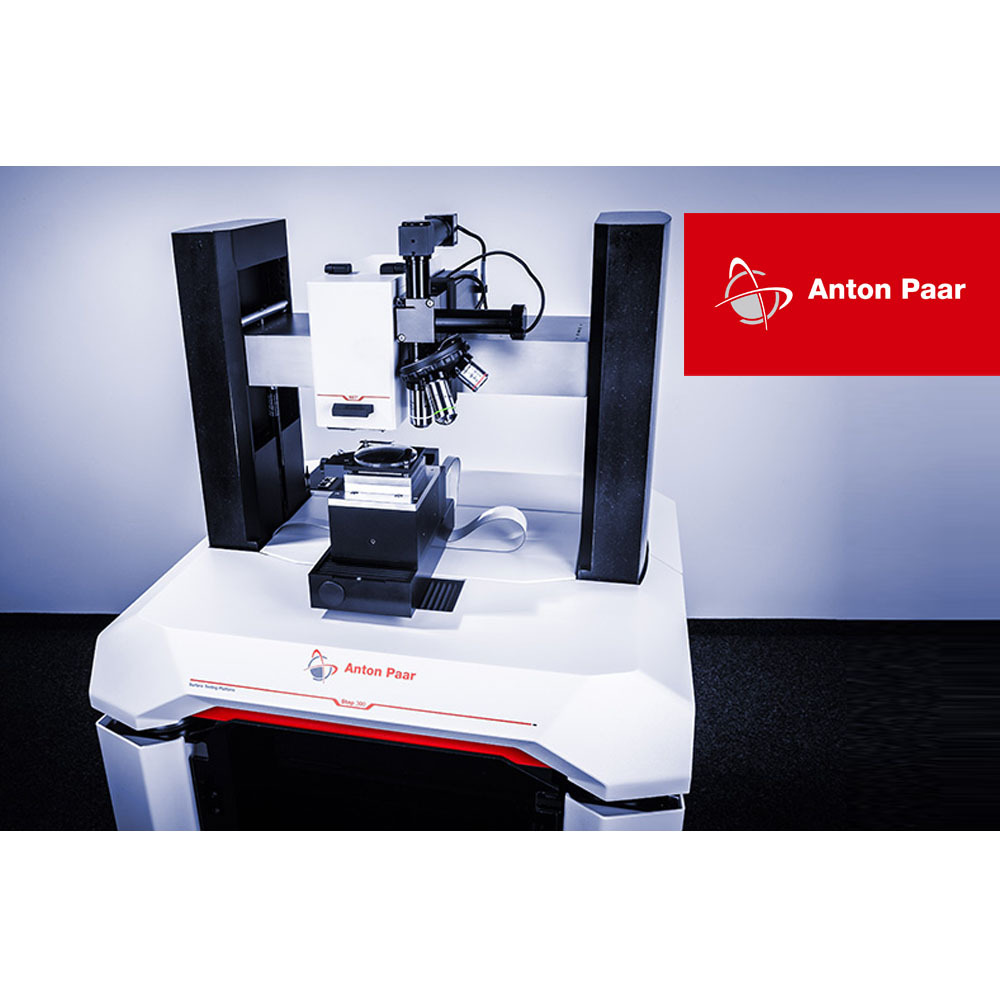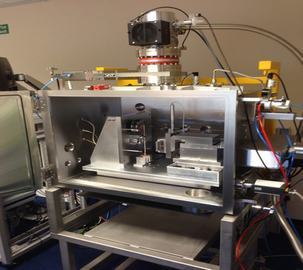
大多数高温材料的失效是由高温、高压作用引起的高温蠕变所致。不同材料的组织、化学成分和热物理性能都存在着较大的差异,因此其蠕变性能的高低也不尽相同。例如,低合金钢和不锈钢之间的蠕变性能就存在很大的差异。鉴此,研究材料的高温蠕变特性就显得尤为重要。
方案详情

目前在石油化工、能源、医药、冶金等行业中,高温材料的使用非常普遍,由此该材料的安全可靠性就提出了更高的要求。这些高温材料的意外破坏将可能会导致灾难性的后果和重大的经济损失。 调查发现,大多数高温材料的失效是由高温、高压作用引起的高温蠕变所致。不同材料的组织、化学成分和热物理性能都存在着较大的差异,因此其蠕变性能的高低也不尽相同。例如,低合金钢和不锈钢之间的蠕变性能就存在很大的差异。鉴此,研究材料的高温蠕变特性就显得尤为重要。而纳米压痕技术提供了一个独特的机会来探测复杂微观结构材料中单个组分或相的蠕变反应,这是传统的测试技术无法实现的。纳米力学测试系统NanoTest Vantage(-25°C至850°C)和NanoTest Xtreme(-50°C至1000°C)以其行业领先的热稳定性以及测量最广泛样品几何形状的灵活性成为高温蠕变反应测量的不二选择。如下图示例: 高温纳米压痕蠕变试验已经在钡钙铝硅酸盐玻璃陶瓷(G18)上进行了,该陶瓷用于分离固体氧化物燃料电池的燃料侧和空气侧的密封。该材料的玻璃化转变温度为620℃。在800℃的工作温度下,密封件的蠕变会导致电池的早期失效。利用纳米力学测试系统,可以研究了800℃下4 h或100 h热“预时效”过程的影响。为高温材料的使用寿命及使用条件提供实验数据。如下图:Micro MaterialsExcellence in Nanomechanics In troduction Nanoindentation provides a unique opportunity to probe the creep response of individual components or phases in complex microstructural materials that are not possible with conventional bulk testing techniques. Elevated temperature creep resistance is important in many applications of high temperature materials.Understanding the fundamental relationship between creep and microstructure is a route to developing improved materials with enhanced stability at elevated temperatures. To measure indentation creep accurately it is essential that the test instrument displays ultra-low thermal drift across the entire measurement range. The NanoTest Vantage (-25°C to 850°C) and NanoTest Xtreme (-50°C to 1000 C) display industry-leading thermal stability in conjunction with the flexibility to measure the widest range of sample geometries. Figure 1. 1200 s tests at 100 mN with a Berkovich indenter. NanoTest systems have the stability for reliable creep measurements over longer experiment durations, and underrdifferent environmental conditions (e.g.hot/cold/variable humidity etc) [1-7]. Figure 2. NanoTest high temperature testing configuration Appl i ca ti o n s i n c l ude Development offnovel high h temperature creep resistant materials Creep behaviour of specific phases or microstructural elements ● Reliability of lead-free solders ● Time-dependent behaviour i n viscoelastic materials Spatially resolved measurements of creep resistance across welded components E l evated tempera tu re c r eep tes t ing So l id Ox i de F u el Cell Mate r i a ls High temperature nanoindentation creep tests have been performed on a barium calcium aluminosilicate glass-ceramic (G18) used for seals that separate the fuel and air sides of a solid oxide fuel cell [2]. The glass transition temperature for this material was 620 C. Creep of the seal at the operating temperature of 800 ℃ can lead to early failure of the cell. Using a cubic boron nitride indenter the influence of a thermal“pre-ageing” process of 4 or 100 h at 800 °C was studied. Figure 3. Indentation creep for G18 after 4h (top) and 100 h (bottom) thermal pre-ageing treatment Marked differences in indentation creep resistance were observed from 550 ℃ (approaching its glass transition temperature). The creep resistance of the sample pre-aged for 100 h at 550 °C was only slightly worse than at room temperature. As the test temperature increased,both 4h h and 100 h samples showed more time-dependent deformation, although this was relatively lower after the longer duration of pre-ageing. Weld and p a rent m a teri a l f or P91 steel Nanoindentation can reveal the temperature dependence of the creep exponent for the process governing plastic flow providing evidence for changing dominant mechanisms of plasticity with temperature since their magnitudes vary strongly for different rate limiting processes. Measurements were made in the parent and weld regions of P91, a high Cr content creep resistant steel used in steam pipes in power plants at its operating temperature of 650 ℃ [3]. In the 300 s tests the maximum indentation loads were sufficiently high (≥ 100 mN)to encompass several grains of the steel and be representative of““bulk” behaviour for the region of i interest. The measurements were with a cBN Berkovich indenter in an Argon gas purging environment. Stress exponents were determined from In(strain rate) vs. In(stress) graphs. Test performed at 650°℃ Stress exponent Parent material Nanoindentation(100 mN) 8.95±0.47 Nanoindentation (200 mN) 7.89±0.41 Uniaxial tensile test 8.46 Nanoindentation(100 mN) Nanoindentation (200 mN) Uniaxial tensile test Measurements of stress Sexponents agree with those determined from uniaxial tensile tests on bulk specimens. Su p e r a ll oys and bond coats Creep exponents were determined [4] at operationally-relevant temperatures on a sample of the Ni-base superalloy CMSX-4and a 200 um thick NiCoCrAlY bond coat (Amdry-386).Nanoindentation measurements were performed i n high vacuum to a depth of 1 um at 1000 °C with an actively heated sapphire indenter. Figure 4. Superalloy and bond coat stress exponents The temperature dependence of stress exponents matched that of the l iterature values between 700-1000 °C. For the bond coat there was good agreement between the measured values and those obtained by tensile testing [4]. Nanoindentatio n creep test i ng as a t ool fo r probing chain const r ai n t in polyme r nanocom p os i tes Extensive research into the performance of polymer-clay nanocomposites has gradually recognized the strength and weakness of these materials. In terms of stiffness, they have advantages over traditional micro-sized fibre and filler technology at low filler contents but at higher filler loading the efficiency of reinforcement in the polymer-clay nanocomposite rapidly declines due to di f ficulties in exfoliating the multi-layered structure of clay and the onset of filler agglomeration. Despite much research it is not yet clear to what extent the improvements in stiffness are simply due to the incorporation of a much stiffer clay f iller, or if the f iller improves the stiffness and creep resistance by interaction with the polymer matrix exerting a constraining effect on the polymer chains. Therefore, Chen and co-workers [5] studied nylon 6-clay nanocomposites (NC) with different filler loading produced by melt compounding and compared their properties to model nylon 6 submicro composites (SMC) reinforced by submicro-thick silica flakes in which polymer chain constraint cannot occur due to the difference in f i ller geometry. Both processing routes produced composites that were stiffer than the base nylon polymer, with the nanocomposites showing higher elastic modulus for a given wt.% filler. The extent of polymer chain constraint was assessed by the analysis of nanoindentation creep data from a 120 s hold at the 10 mN peak load. The NC samples showed improved creep resistance for all f iller loadings. Strain rate sensitivity analysis and creep compliance analysis of the creep data revealed clearly that the time-dependent deformation in the NC decreased with filler loading consistent with the clay platelets exerting a constraint effect on the polymer chains which i ncreased with filler loading. Figure 6. The creep time constant changes with filler loading for the NC. In sharp contrast, on the SMC samples there was no evidence any reduced time-dependent creep or changing strain rate sensitivity, consistent with a lack of constraint expected from the much lower aspect ratio of the silica flakes. The methodology applied in this study provided strong evidence that constraint does occur in nylon 6-clay nanocomposites. Due to the high stability of the NanoTest it is easily applicable to the optimisation of other systems such as CNT/polymer composites. The indentation creep behaviour of polymers and polymer nanocomposites can be highly sensitive to the 1test environment conditions (hot/cold/moisture)[6]. Figure 7. Changing creep resistance with humidity for nylon-clay nanocomposite material El evated temperature testing of ref r actory metals Tungsten and its alloys are being considered as the main plasma-facing material in a fusion reactor. The NanoTest Xtreme has been used to test the mechanical properties of tungsten in high vacuum at 25-950 °C [7]. Testing under high vacuum was essential as tungsten oxidises rapidly at >500 °C in air. With thermal drift at 750-950°C typically as l ow as 0.05nm/s the NanoTest has the stability to run longer duration indentation creep tests throughout the temperature range. Greater time-dependent deformation Was observed starting from 850°℃. Figure 8. Nanoindentation creep on polycrystalline tungsten at 945 ℃ at 200 mN with a cBN Berkovich indenter under high vacuum. NanoTest Vantage Spec if icatio n s High stiffness granite frame. Ultra-low thermal drift (~0.004 nm/s) provides the stability for long-duration creep tests. NanoTes t Xtreme Specif i cat i ons NanoTest Xtreme thermal drift rates as low as 0.01 nm/s in vacuum at 750℃ and 0.05 nm/s at 950°℃. Micro Materials Lt d At the forefront of nanomechanics since 1988:- First commercial high-temperature nanoindentation stage C First commercial nano-impact stage C First commercial liquid cell First commercial instrument for high-vacuum, high-temperature nanomechanics Nano T est adva n ta g es for hi gh te m pe ra ture creep t esting The NanoTest Vantage and Xtreme have the necessary ultra-low thermal drift for creep testing due to design advantages including:- 1.Active tip heating- the indenter and the sample are both actively and independently heated, resulting in an isothermal contact before the experiment begins. 2.Horizontal loading-the unique load head configuration of the NanoTest systems means that there is no heat flow onto the loading head or depth measurement sensor. 3.Highly localised heating - a heat shield and insulating shroud around the heated zone ensures instrument stability dur i ng high temperature experiments. 4.Patented control protocol -software routines are used to precisely match theindenter and stage temperatures to 0.1°C. References and ac k nowled g ement s [1] Nanomechanics to 1000 ℃ for high temperature mechanical properties of bulk materials and hard coatings,BD Beake, AJ Harris, Vacuum 159(2019) 17-28. [2] Mechanical properties of solid oxide fuel cell glass-ceramic seal at high Temperatures, J Milhans et al, J Power Sources 196 (2011)5599-5603. [3] MJ Davies PhD Thesis, University of Nottingham 2013. [4] On 1 extracting mechanical properties from nanoindentation at temperatures up to 1000C, JSK-L Gibson et al, Extreme Materials Letters 17(2017)43-49. [5] Probing polymer chain constraint and synergistic effects in nylon 6-clay nanocomposites and nylon 6-silica flake sub-micro composites with nanomechanics, J Chen et al,Nanocomposites 1 (2015) 185-194. [6] Environmental nanomechanical testing of polymers and nanocomposites,J Chen et al, in Nanomechanical analysis of high performance materials, Ed. A. Tiwari, Springer (22 pp)2014. [7] Temperature dependence of strain rate sensitivity,indentation size effects and pile-up in polycrystalline tungsten from 25-950 ℃, BD Beake et al, Materials & Design 156(2018)278-286. Contact us :- Micro Materials Ltd Willow House, Yale Business Village,Ellice Way, Wrexham, LL13 7YL, UK Tel:+44(0) 1978 261615 E-mail : info@micromaterials.co.uk www.micromater i als.co.uk
确定
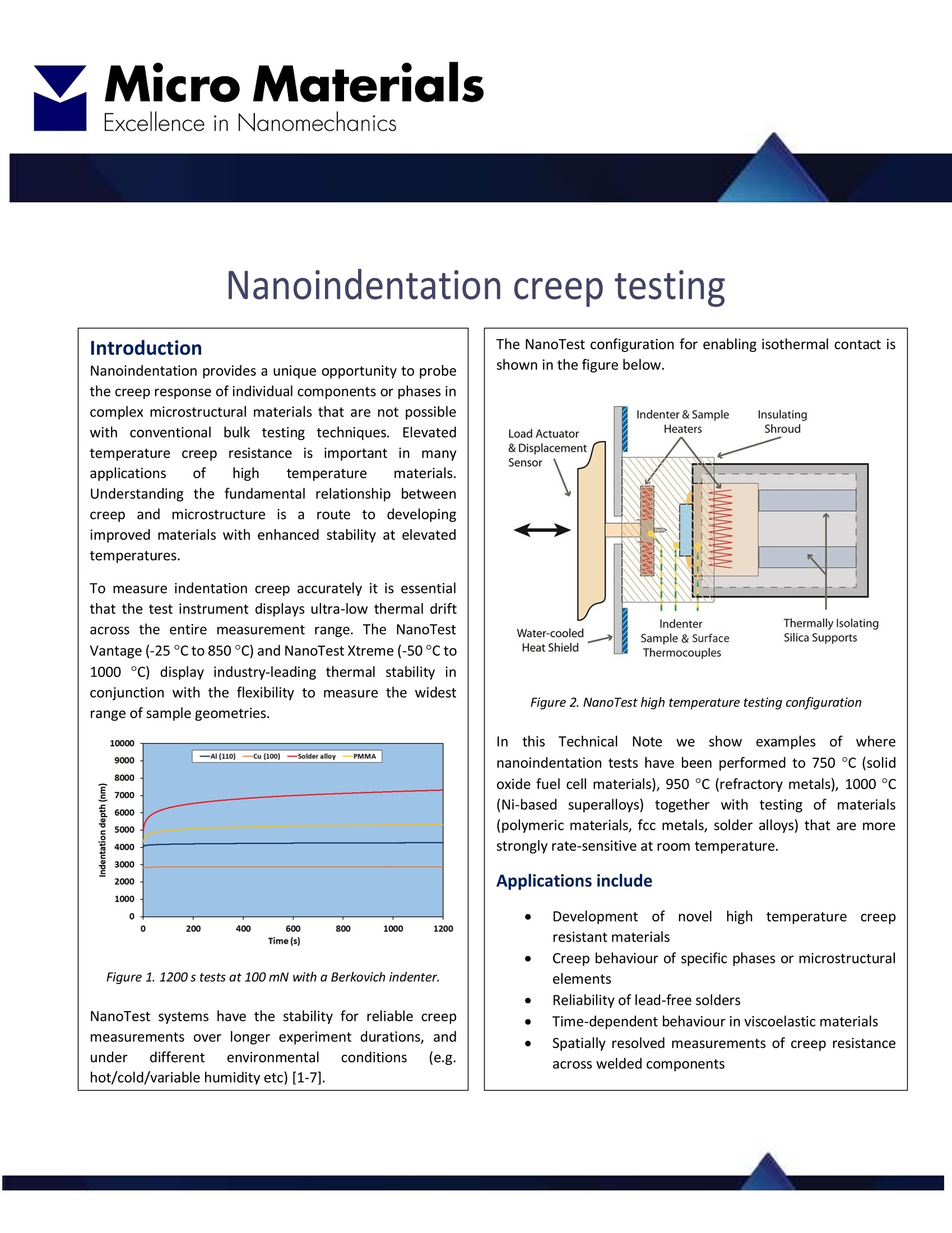
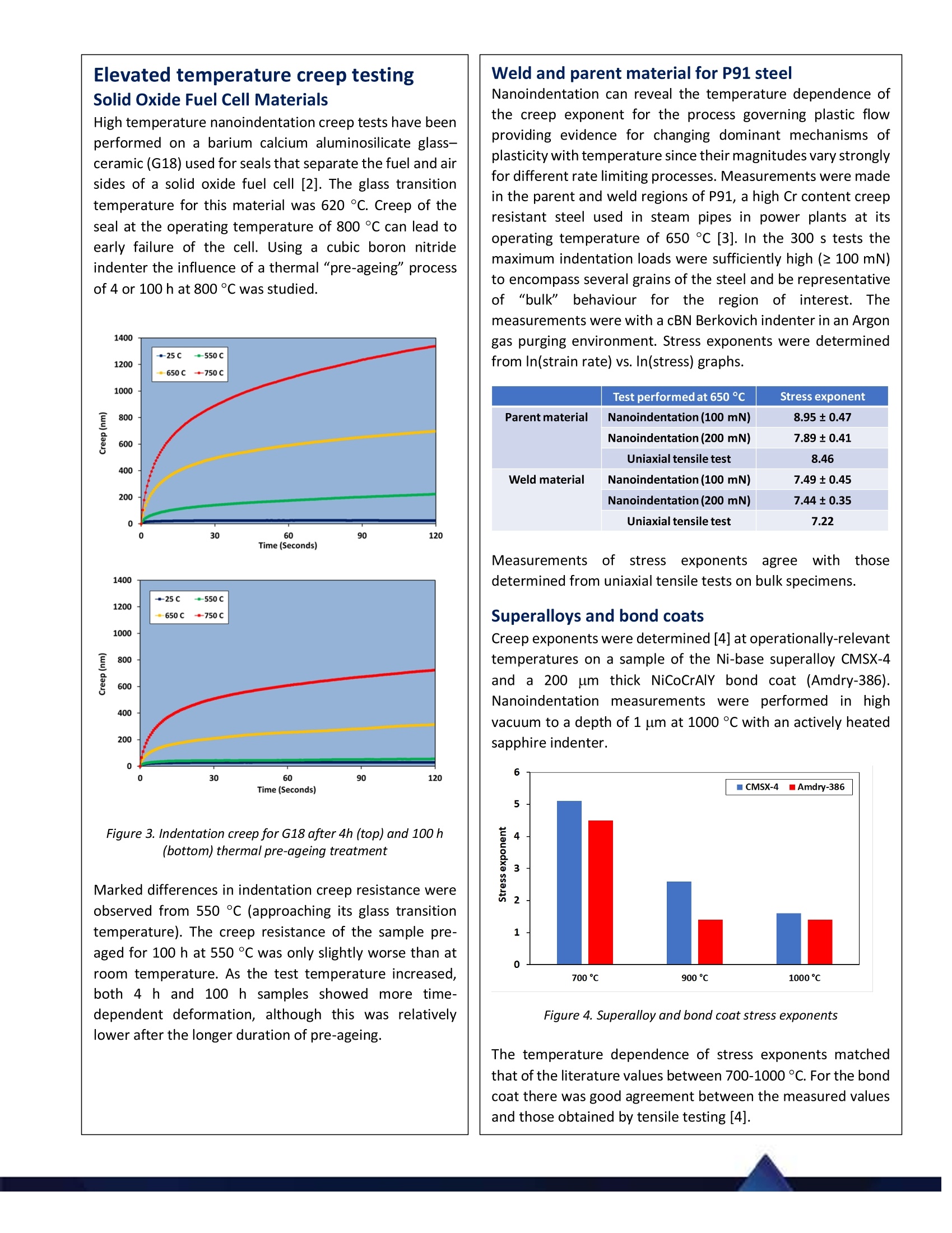
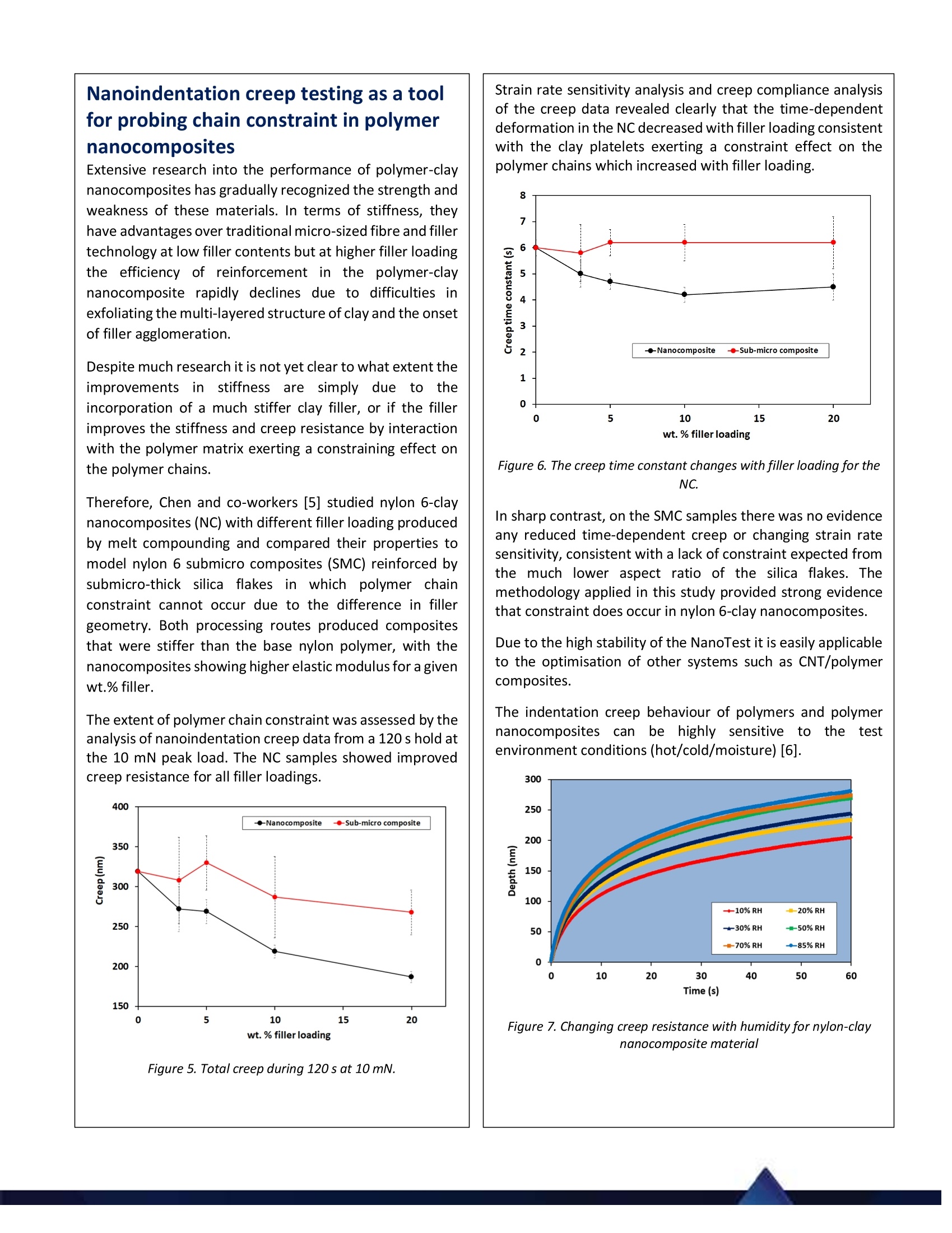
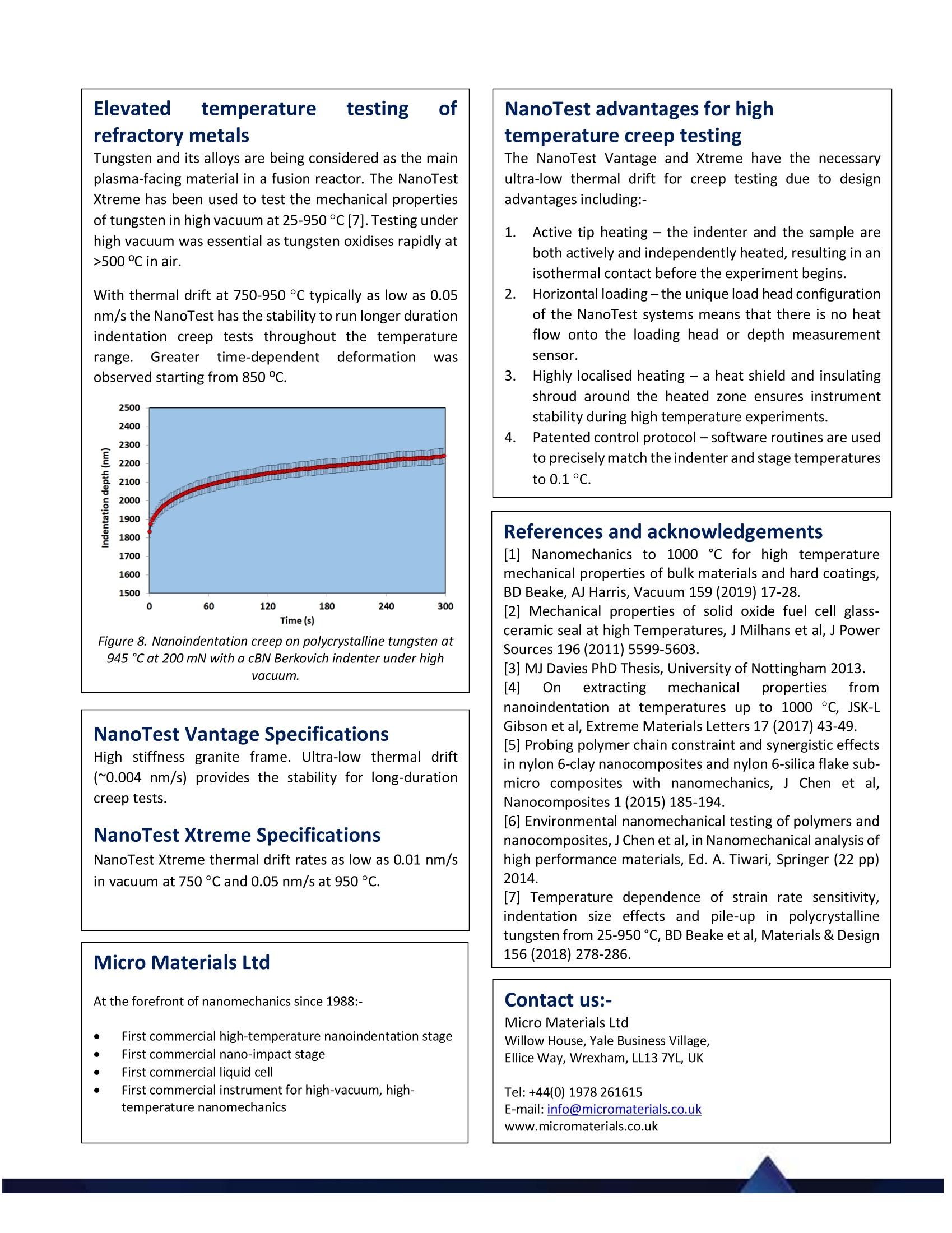
还剩2页未读,是否继续阅读?
北京正通远恒科技有限公司为您提供《纳米力学测试系统在高温材料方面的应用》,该方案主要用于其他中高温材料检测,参考标准--,《纳米力学测试系统在高温材料方面的应用》用到的仪器有纳米力学测试系统/纳米压痕仪 NanoTest Xtreme
推荐专场
相关方案
更多
该厂商其他方案
更多









